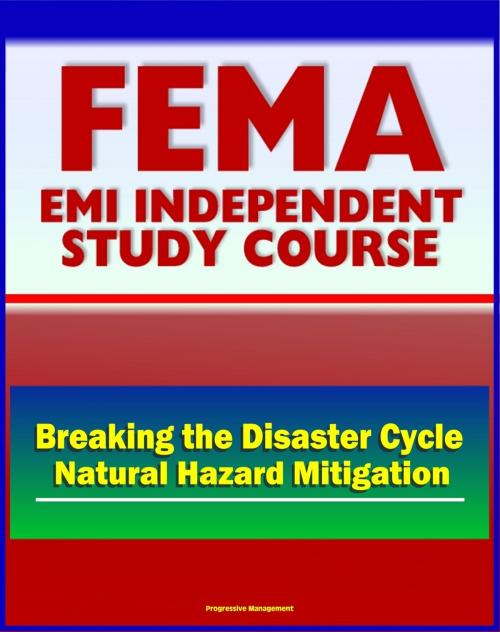21st Century FEMA Study Course: Breaking The Disaster Cycle: Future Directions in Natural Hazard Mitigation - History of Disaster Policy, Mitigation, Ethics, Studies, Plans
Nonfiction, Social & Cultural Studies, Political Science| Author: | Progressive Management | ISBN: | 9781465715975 |
| Publisher: | Progressive Management | Publication: | July 19, 2011 |
| Imprint: | Smashwords Edition | Language: | English |
| Author: | Progressive Management |
| ISBN: | 9781465715975 |
| Publisher: | Progressive Management |
| Publication: | July 19, 2011 |
| Imprint: | Smashwords Edition |
| Language: | English |
This Federal Emergency Management Agency (FEMA) independent training course manual from the Emergency Management Institute (EMI) provides comprehensive information on disaster mitigation policy and techniques.
Topics covered include: History of U.S. disaster policy; disaster mitigation act of 2000; major disaster studies and plans; sustainability and resilient communities; voluntary buyouts; flood insurance; structural approaches to flood and coastal hazard mitigation; implementing mitigation at the state level; coastal erosion issues; local hazard mitigation plans; hazard areas definition and risk notification; ethics and hazard mitigation; measuring hazard mitigation success.
Course overview, purpose, and overall objectives include: Describe the history of U.S. disaster policy and hazard mitigation practice. Identify the assumptions underlying traditional federal disaster policy, based on a post-disaster model of mitigation. Describe the intergovernmental policy system for natural hazard mitigation under the Robert T. Stafford Disaster Relief and Emergency Assistance Act. Discuss the concepts of mitigation capacity and commitment. Discuss problems with hazard mitigation under the traditional model, including issues of repetitive damage and the disaster cycle. Understand the use of structural approaches to hazard mitigation and their alternatives. In contrast to nonstructural approaches to mitigating natural hazards, such as regulating land use or purchasing homes in hazard-prone areas, structural approaches seek to hold back or control the forces of nature with man-made devices such as dams, weirs, jetties and levees. While nonstructural approaches seek to keep people out of harm’s way, structural approaches seek to keep natural hazards at bay. Thus, rather than move people or buildings, we can move or tame rivers and hold back coastal waters that put us at risk.
This is a privately authored news service and educational publication of Progressive Management.
This Federal Emergency Management Agency (FEMA) independent training course manual from the Emergency Management Institute (EMI) provides comprehensive information on disaster mitigation policy and techniques.
Topics covered include: History of U.S. disaster policy; disaster mitigation act of 2000; major disaster studies and plans; sustainability and resilient communities; voluntary buyouts; flood insurance; structural approaches to flood and coastal hazard mitigation; implementing mitigation at the state level; coastal erosion issues; local hazard mitigation plans; hazard areas definition and risk notification; ethics and hazard mitigation; measuring hazard mitigation success.
Course overview, purpose, and overall objectives include: Describe the history of U.S. disaster policy and hazard mitigation practice. Identify the assumptions underlying traditional federal disaster policy, based on a post-disaster model of mitigation. Describe the intergovernmental policy system for natural hazard mitigation under the Robert T. Stafford Disaster Relief and Emergency Assistance Act. Discuss the concepts of mitigation capacity and commitment. Discuss problems with hazard mitigation under the traditional model, including issues of repetitive damage and the disaster cycle. Understand the use of structural approaches to hazard mitigation and their alternatives. In contrast to nonstructural approaches to mitigating natural hazards, such as regulating land use or purchasing homes in hazard-prone areas, structural approaches seek to hold back or control the forces of nature with man-made devices such as dams, weirs, jetties and levees. While nonstructural approaches seek to keep people out of harm’s way, structural approaches seek to keep natural hazards at bay. Thus, rather than move people or buildings, we can move or tame rivers and hold back coastal waters that put us at risk.
This is a privately authored news service and educational publication of Progressive Management.















